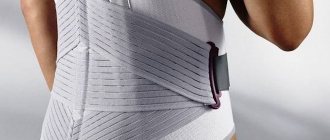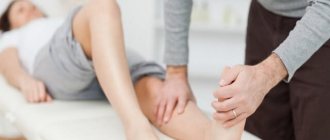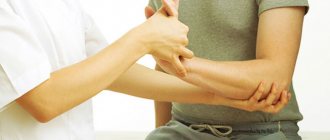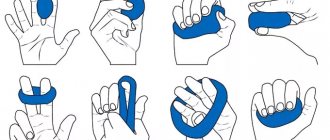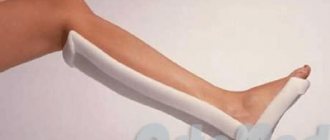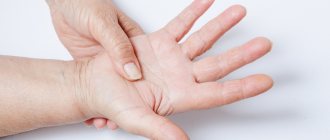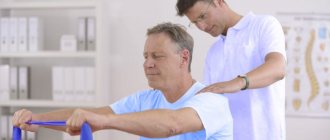Finger fractures are a common injury. After the bone heals, a person needs long-term and high-quality rehabilitation. The beauty and mobility of the hand depends on how to develop the finger after a fracture. In the article, the reader will learn everything about restoring the hand after injury.
General rules for rehabilitation after a broken finger: what is allowed and what is prohibited after removing the cast
Rehabilitation after injury to fingers will be effective if a person uses all recovery methods.
After removing the bandage, you must follow these recommendations.
- Do massage. Moreover, some traumatologists advise performing light massage movements even before removing the plaster cast. Massage significantly improves blood circulation in the affected area of the body. All massage movements are performed very carefully so as not to cause pain.
- Eat properly. The diet should contain foods that compensate for the lack of silicon and calcium. It is healthy to eat seafood, dried fruits, cheese, legumes, herbs, and rhubarb. It is useful to drink a little milk and eat dairy products.
- Perform a set of therapeutic exercises. They help restore joints that have been immobilized for a long time.
- Take hand baths. They treat swelling, pain, and speed up metabolism. Baths with the addition of sea salt are very useful.
- Undergo physiotherapeutic procedures. Physiotherapy stimulates regenerative processes, reduces pain and swelling.
Typing on a keyboard is useful. Using your thumb while working on the computer will help you regain movement faster. For the same reason, you need to do work that uses fine motor skills.
After removing the cast, you should not subject your arm to heavy loads. Recovery after a fracture should occur gradually.
You should also not make sudden movements that can damage your joints.
Other restorative procedures
Electrophoresis apparatus
The techniques discussed above can be used at home; the effectiveness of their use will depend on the frequency of their implementation and the accuracy of the movement. Rehabilitation courses after the removal of the cast remain important, which will prevent the joints and muscles from stagnating. What to do if your finger cannot bend after a fracture?
Table - Prevention methods after a fracture:
| Name | Description |
| Professional massage | The massage therapist will quickly restore the mobility of the limb with the help of correct pressure on certain points and accelerate blood circulation. |
| Electrophoresis | Electrophoresis with calcium helps bones strengthen and improve blood flow. Electrical heating will reduce pain after injury. |
| Exercise therapy | Under the supervision of a specialist, therapeutic and preventive exercises are performed with the permitted load. |
| Magnetotherapy | This is the effect of a passive magnetic field on damaged areas. If the finger cannot bend at the joint after a fracture, this procedure will help increase muscle strength, improve coordination and reaction. |
| Diet | It is suggested to increase the consumption of calcium-rich foods. |
| Acupuncture | Impact on certain points with needles will speed up the movement of blood, reduce pain, and relax tense muscles. |
In many clinics, these types of therapy are provided free of charge. If you have to use paid services, and the price is scary, you don’t need to save on your health. It is definitely worth using recovery techniques, because the performance of the limbs is at stake.
Acupuncture
You can learn more about this topic by watching the video in this article.
A set of rehabilitation measures
For effective recovery without negative consequences, they usually perform gymnastic exercises and massages. The entire recommended set of exercises does not take much time. You need to exercise daily.
Note! Doctors allow you to perform the complex 3 times a day. To make the exercises even more effective, you can warm your hands or feet in warm (but not hot) water.
Despite the fact that only part of the hand is damaged, it is necessary to work with the entire part of the upper limb. This is due to the fact that she was immobile for a long time due to the plaster cast. By working only one part of the hand, you can disrupt the structure of the hand.
Development of fingers after a fracture includes the following additional manipulations:
- collecting small objects from the table surface;
- collecting matches with both hands;
- typing on a typewriter or keyboard;
- performing exercises using an expander.
Preparation
Before doing the exercises, you should place your hands in a container of warm water. Salt baths are very useful. Then you need to do a warm-up. It consists of the following actions:
- warming up the affected area of the body (this can be achieved by rubbing);
- performing circular movements with the hand or foot;
- straightening the fingers;
- making tapping movements on a hard surface.
Before performing a set of exercises, it is useful to immerse your hands or feet in a salt solution. This helps to restore blood circulation more quickly and relieve swelling.
Exercises for rehabilitation
Physical therapy for a fracture promotes a more rapid restoration of normal functionality of the limb. This occurs due to the healing of bone and cartilage tissue. Exercises are selected to involve as many muscle groups as possible. This significantly speeds up the rehabilitation process.
All rehabilitation measures are prescribed on an individual basis. If it is necessary to work with the lower extremities, a less active complex is selected. This is explained by the fact that the structure of the tissue of the bones of the feet causes a slight limitation of motor function.
Note! The arms are the more functional part of the skeleton. They require a serious approach depending on the extent of the damage.
The best exercises for fingers
The exercises below can quickly restore motor activity and prevent the development of fracture complications. Speed up recovery, incl. After a displaced fracture, such actions will help.
- Place your hand on the table, extend your thumb as far as possible.
- Perform circular movements.
- Raise your upper limbs up, spread your fingers to the sides.
- Squeeze your fingers towards each other.
- Bend the little finger and index finger, and move the thumb away.
- Clench and unclench your fist tightly. Perform these movements in water.
All these exercises are developed and prescribed by the doctor on a purely individual basis, based on the patient’s health condition and the severity of the injury.
The best exercises for your toes
A toe can become injured due to a heavy object falling on it or an awkward movement. The injury leads to long-term limitation of physical activity. The thumb is especially affected. The mobility of the foot is limited, the muscles atrophy. As a result, the entire foot has to be reconstructed.
Duration of the rehabilitation period and precautions
Typically, recovery of a finger after a fracture lasts no more than a month. Exercises and additional rehabilitation measures will be beneficial and relieve complications.
It is recommended to take the following precautions while performing exercises:
- do not make sudden movements with the affected limb;
- give only feasible load;
- do not bring the affected area of the body to overwork;
- do not do more than four sets of each exercise during the day.
Fractured toes
Foot massage before warming up
With an injury to the leg, the same problem can occur, and although our performance does not depend on the mobility of the fingers of the lower extremities, the question is still “Why does the finger not bend after a fracture?” should be alarming.
You should not wait for improvement; after removing the cast, you need to start working on mobility.
- You should start warming up by rubbing the entire foot and each appendage separately.
- Do circular rotations in both directions, alternately with each leg, for 5 minutes.
- The phalanges should be closed and opened, slowly, remaining in each position for 10 seconds.
- You can bend the toe towards the foot and back, arching it more.
- The most effective exercise is to stand on your toes, then on your heels, stretching your foot.
- You can use your feet to collect small parts, preferably tubular in shape (plastic tubes, pencils or pens), for easy grip.
After an injury to the lower extremities, you should think about shoes: they should be free and not restrict movement.
TIP: if it hurts to bend your finger when doing exercises after a fracture, you should immediately stop doing them until you feel better. If the pain does not stop for a long time, you need to go to the hospital.
How to develop fingers after a fracture - OPORA Family Clinic, Ekaterinburg
A finger fracture is an injury that occurs as a result of excessive loads on the phalanges or a blow that disrupts the integrity of the bone structure. Next we will describe how to develop a finger after a fracture.
Metacarpal fracture
Injury to the metacarpal bone occurs when falling onto a straight palm. Plaster is applied to the damaged surface, the rest remains free. If your finger cannot bend after a fracture of the metacarpal bone, you need to perform an exercise to restore movement. The entire lower arm will be developed together.
Metacarpal bone
- After warming up and a warming massage, perform circular movements of the palm in different directions.
- Squeezing each finger in turn is an excellent way to return the joints to their previous activity.
- Bending to the back of the entire hand is a good way to gently target all the muscles.
- Half-turns are performed with the brush straightened in different directions.
- Another method is to rotate the wrist around its axis.
- You need to move your limbs apart and move them together.
Many people ask: “Can a finger bend when a fracture occurs?” The answer to this question is yes. With a broken metacarpal bone, if the fingers have retained some mobility, you can begin to carefully train in the presence of a cast.
Rehabilitation includes the following:
- squeezing and unclenching;
- touching the others with the thumb;
- tilting the upper phalanx using your free hand.
First aid
Rehabilitation after a broken finger and further recovery will directly depend on the provision of pre-medical care. The main steps are as follows:
- an ice compress should be applied to the damaged area, since the phalanx has a thin structure, the cold is applied for 7-10 minutes, the procedure is repeated after half an hour;
- the limb must be immobilized by applying a fixing bandage;
- to avoid traumatic shock, the victim is given painkillers to drink;
- provide the patient with complete rest and isolate the phalanges from contact with external irritants;
- accompany the injured person to the nearest medical facility to provide specialized care and correct diagnosis.
At the hospital, the patient will have an X-ray, the nature of the fracture will be determined, and a cast will be applied.
Development of fingers after a fracture
Since the fingers are immobilized in a plaster cast for a long time, their motor skills are lost. To develop fingers after a fracture, it is necessary to perform physical therapy. This should be done gradually; in no case should you put a full load on your arm, as this can lead to repeated injury. Exercises help restore mobility, eliminate unpleasant pain syndromes, and prevent the development of callus. The entire arm needs to be treated, regardless of which phalanx was broken.
Tactics for conducting recovery exercises:
- warm-up gymnastics - you need to gently rub your hands to warm up;
- massage - the procedure consists of joining the fingers in a lock and performing rotational movements with the hands;
- clench and unclench your hands into a fist;
- spread your fingers in different directions, relax and dangle them;
- put your hands on the table, palms down, bend, moving the entire limb forward;
- hands are placed on a flat surface and turned over evenly (palms down and up);
- Keeping your fingers closed, you should lightly tap on the table.
In addition to this set of exercises, it is recommended to develop fine motor skills by doing the following:
- collecting beads, cereals or other similar items;
- hold matches between the fingertips of the opposite hand;
- typing text on the keyboard;
- develop brushes with an expander;
- embroidery, drawing, hand writing.
Symptoms
The main signs that a finger is broken:
- Aching pain spreading from the site of injury throughout the finger and even in some cases radiating into the hand and arm itself, right up to the elbow. When you touch the finger, the pain only increases;
- A hematoma forms, bleeding under the skin;
- Swelling in the damaged area;
- Obvious deformation of the finger;
- Limited movement - unable to straighten fingers. You can check by trying to straighten your arm on the table.
There is a risk that simultaneously with a fracture, joint dislocation may occur, or ligaments and tendons may be damaged.
If the fingers from the index to the little finger have more or less the same signs when fractured, then a fracture of the first, thumb, can be confused with a dislocation or an ordinary bruise. Its main phalanx is more often susceptible to damage.
To accurately diagnose a fracture without displacement, you will have to use an x-ray.
Radius fracture
If after a fracture of the radius the fingers do not bend, you need to actively develop them by performing the following manipulations:
- Lean on your upper limbs, keep your forearm straight, and bend your hand at the wrist.
- Place your palms together, exerting resistance, pressing them against each other.
- Holding your hand on the table, slide it, fanning out your fingers until the muscles stretch.
- Play an imaginary keyboard instrument.
- Click your thumb on everything else.
Treatment
Which treatment method is chosen depends on the characteristics of the individual case:
| Treatment method | When to use | Peculiarities |
| Conservative | In the absence of displacement and if the fracture did not involve the joint | Using plaster tape, the doctor will fix the area on the finger that was damaged. A polymer dressing is also used. The finger located nearby can act as a splint. |
| There is displacement, but the fracture is stable. | The displacement is removed under local anesthesia. Surgical intervention is not used. Fixed with plaster tape and a polymer bandage. | |
| Surgical intervention - osteosynthesis | With an unstable form of fracture, when the surfaces of the joints are damaged, there are displaced fragments and pronounced deformation. | It is necessary to restore the anatomically correct shape of the finger and hand. The doctor makes cuts, connects the fragments and fixes them using plates, knitting needles and screws. Stitches can be removed after 2-3 weeks. |
Thumb
There are many exercises for recovering from a fracture. It is also recommended to add special therapeutic exercises to the standard complex:
- Make a fist with your hand and imagine that there is a lighter inside. Try to “ignite” it, thus stretching your thumb. Movements should be smooth and slow.
- Lightly clench your thumb inside your fist, and then change the position of your fingers so that your thumb is on the outside. Repeat these compressions several times.
- Relax your hand and alternately reach with your thumb all the others - first one by one, and then one after another.
- “Salt” an imaginary dish with imaginary salt - collect a pinch of it from your thumb, index and middle fingers.
- Clench your fingers into a fist, and with your thumb draw circles in the air to the left, and then to the right. Perform the exercise slowly and with minimal amplitude.
It is necessary to pay a lot of attention to the thumb, since the performance of such exercises will determine how the hand will look and work in the future.
Frequently asked questions to the doctor
Hand swelling after injury
Hello, my name is Svetlana. 1.5 months have passed since the wrist injury, the plaster was removed, but the finger on the hand does not bend after the fracture, and the hand swells. What can be done to get rid of this and get movement back?
Hello Svetlana. The fact that the finger is motionless is the norm; it is necessary to perform special exercises to help cope with this. Swelling indicates that fluid is accumulating inside from poor blood flow. Physiotherapy, massage and exercise therapy are required, which the doctor will prescribe for you.
Take care of your joints in advance
Hello, my name is Margarita. I have a metacarpal bone injury, I will be wearing a cast for about 2 more weeks. Can I take care in advance about developing the motor activity of the hand as a whole? Is there any instruction that will help me?
Hello Margarita. To answer the question, it is important for me to know: does the finger bend when it is fractured? If the phalanges remain mobile, you can perform simple procedures in a cast that will make life easier after the cast is removed. It is worth practicing bending the phalanx and moving the limbs of the affected arm.
Development of 2-5 fingers after a fracture of the phalanges
It is advisable to repeat each of the proposed exercises ten times. If it is easy and there is no discomfort, you can do more repetitions. If pain is felt, then the amount should be reduced.
- Exercise 1 - lock. The fingers need to be clasped together and stretched thoroughly;
- Exercise 2 - fist. You just need to squeeze and unclench your hand. You should do this slowly, without unnecessary effort, trying to feel every bone and joint. The number of repetitions depends on the basic sensations and comfort;
- Exercise 3 - caterpillar. First, place the brush perpendicular to the table surface so that your fingertips touch the hard surface. Then you need to lower your palm and press it to the table. Next, gather all your fingers into a fist and straighten them again. Return the brush to its original position. Such movements imitating a caterpillar should be repeated several times;
- Exercise 4 - stretching. The fingers are joined into a lock and the palms are extended outward in front of you. In this case, the lock cannot be disconnected. You need to stretch, stretching your fingers at the same time. Then the lock is pressed to the body, palms inward and fingers stretched again;
- Exercise 5 - pile. Squeeze all your fingers into a pile - a large pinch. Then spread your fingers in different directions. Repeat 10-15 times;
- Exercise 6 - fan. Spread your fingers in different directions to resemble a fan. You need to spread them as wide as possible. Painful sensations can appear even in the case of a completely healthy hand. If the discomfort is tolerable, then this is normal and is an excellent stretch for the joints;
- Exercise 7 - slits. Place your two hands together, palms facing each other. Alternately make slits with each pair of fingers, pushing them apart;
- Exercise 8 - drum. Place your hand on a flat surface, palms down. Alternately lift each finger up and immediately lower it, drumming on the surface, and then lift and lower all fingers together.
You can also resort to exercises to develop fine motor skills - collecting beads, cereals or seeds, typing texts on a computer keyboard, drawing, embroidering, and also regularly practicing with a hand expander.
Despite the intensity of this type of exercise, rehabilitation of finger fractures can take about a month after the cast is removed. It is important not to overwork the arm, thereby limiting the risk of complications. Sometimes the doctor may recommend exercise therapy, massage and physiotherapy. All this will only speed up the process of recovery and return to full activity.
Source
